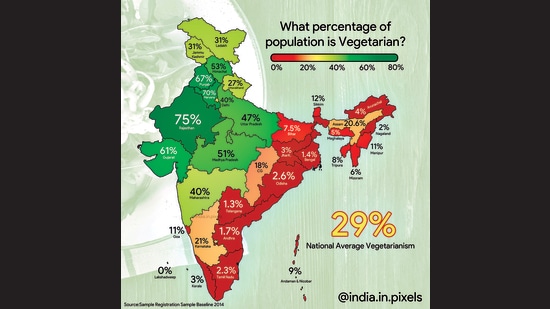(Originally posted on Dec 15, 2021 on the Drishti blog)
2022 is in sight, and AI is finally hitting the mainstream. (That it has been almost 35 years since I first saw my lab-mate, Charlie Vann, using neural networks to monitor cutting tools is a different story.)
Each year, I take a look back at what is happening in manufacturing, artificial intelligence and computer vision across industries. Last year I noted that practical AI was becoming more prevalent, and this year I can confidently say that AI is becoming mainstream across industries, but particularly in manufacturing.
There are a few proof points that I would list to support this claim. First, the folks with whom we meet in manufacturing companies have a much clearer grasp of what AI and computer vision can do, including those without a background in engineering — perhaps because all of us are increasingly adding cameras to our home security systems. Customers today come to us with clear use cases and business problems in mind, rather than seeing AI as a shiny new innovation to try in a pilot deployment as in years past.
Interestingly, over the last two years I have started seeing customers run over to Costco and deploy basic cameras systems to really “see” what is happening on the plant floor. With this increased exposure, clarity and maturation of the technology, the conversations have rightly shifted from proving ROI and value to problem solving and serious deployment.
As a result, the deals we sign with customers today aren’t with the innovation team; they’re with operations. Until recently, deals would originate with innovation, deploy in the form of an innovation-driven proof of concept and end without a predetermined plan to scale. On behalf of AI vendors everywhere, I can say I’m thankful that pilot purgatory is increasingly no longer the norm, though the innovation team still plays a key role in bringing new tech into the factory.
With this maturity comes additional considerations. When a technology like AI is sitting in an innovation lab, things like privacy, infrastructure, training and support aren’t on the radar. But the moment it becomes operationalized, greater focus is on those areas, so steps must be taken to address the consequences of mainstream adoption.
Privacy
AI companies need to allocate time and resources toward ensuring user privacy is protected. AI companies will begin focusing on more privacy measures than in the past, including data anonymization, facial blurring and more to make AI more palatable.
Infrastructure
New technology like AI may require more robust infrastructure. In 2022, with major shifts in product technologies (e.g., the electrification of cars) more companies will invest in building out new plants and updating the infrastructure in existing ones. Having been in this business for some 30 years, I can confidently state that the speed at which technology is coming to manufacturing is the fastest I have seen, and manufacturers have to get their plants up to snuff or suffer a competitive disadvantage.
Training
New technology is only effective if and when used appropriately. And people are at the center of these usage decisions. Therefore, as AI becomes more embedded in companies, training programs will be critical to the success of AI. They will have to be developed and offered to ensure adoption, proper use of the technology and broad expansion of AI capabilities. The thoughts that I have previously shared on data literacy are even more important going forward as we focus not just on creating the AI engines, but on interpreting their outputs as we scientifically test hypotheses and scale the successful experiments.
Crossing the chasm
The problems AI is solving are big and complex. Companies are willing to make investments at scale because they intrinsically believe the value and have measured results to support this belief. This is a critical inflection point for any technology – the need to prove its ability to run at scale becomes more important than the need to prove its value. AI is now being used with the expectation that it will have an impact on a business’ bottom line by finding practical problems to solve.
In 2022, AI will continue to become more generalizable. Including in two areas of deep interest to us: training and model development. When we started Drishti, we would annotate 100s if not a few thousand videos to train our neural networks. Today, we annotate just 10s of videos and synthetically generate a larger number to train them, while maintaining the same level of accuracy in a very demanding environment.
Consequently, training and retraining times are down dramatically, from months to hours, ensuring that we can accurately mirror activities on the plant floor. On the model development side, we solve classes of problems, and do not build specific instances. Shifts of this sort are the only way for AI to scale practically in the real world.
As more companies gain a better understanding of the problems AI can solve, they will tune the use of AI from a value and cost perspective like we have. That makes AI more accessible and deployable to a broader audience — a sure sign of maturity.
Global trends to keep an eye on in 2022
We’ve seen two trends emerge from a global perspective that are worth attention in 2022:
- MLOps is a phenomenal career move. Just as DevOps was a new and necessary part of building cloud applications, MLOps will be pivotal to building AI applications. Think of all of the activities around the simple (ok, sometimes not so simple) neural network: testing new network architectures, managing libraries of models, deploying the relevant ones and training them to the specifics of the station in question, ensuring their run time performances (speed, accuracy, etc), and retraining them continuously to ensure that they aren’t drifting/trailing the real world situation. If I were a young engineer getting started, I’d double down on MLOps. It might just turn out that the shortage will shift from ML engineers to MLOps engineers.
- AI is going global. I wake up every morning to many sales requests from prospects in India, Russia and developing nations. While they may not fully appreciate or understand what we do, or the cost structure associated with deploying AI solutions today, I can clearly see them connecting their problems to AI solutions — the power of video analytics is there for all to see. In fact, it’s pretty clear that the BRIC nations and others will be key markets for AI in the near future.
This year has been a turbulent one, and 2022 may be as well, but the future of AI is brighter than ever. While I am sure that my co-founder and Drishti CTO Krishnendu Chaudhury and his folks are likely stomping around and cursing from time to time (just as Charlie at Stanford would do late at night when a three-day training process crashed unexpectedly), it is clear to me that as companies continue to see AI as a safe bet, they will consider the use of AI technology as yet another tool in their toolbox to solve their biggest problems — problems so big they’re willing to make an investment at scale because they intrinsically believe the value AI provides.
I can’t wait to see the promise of AI really go mainstream in 2022. The chasm is behind us!










